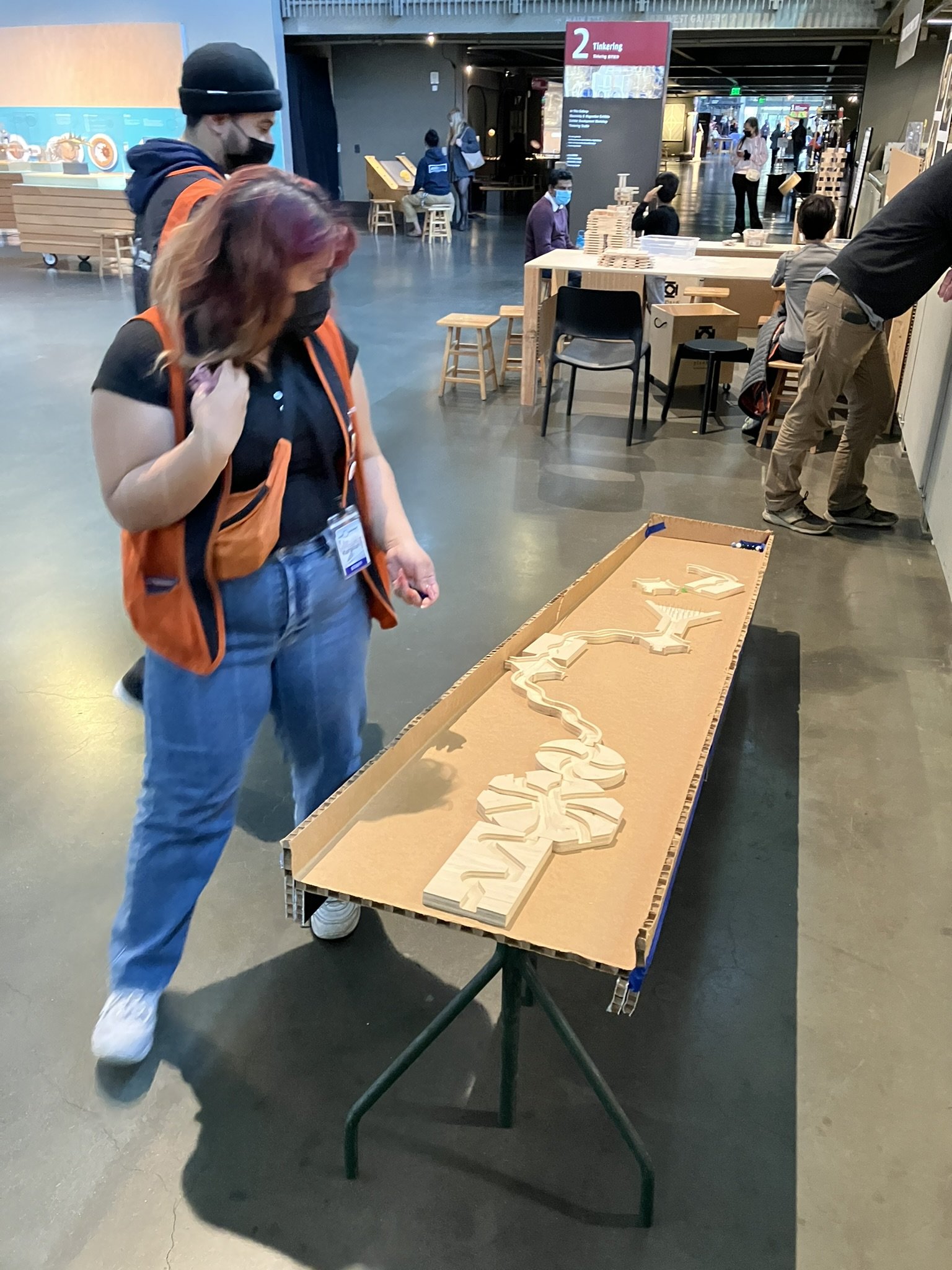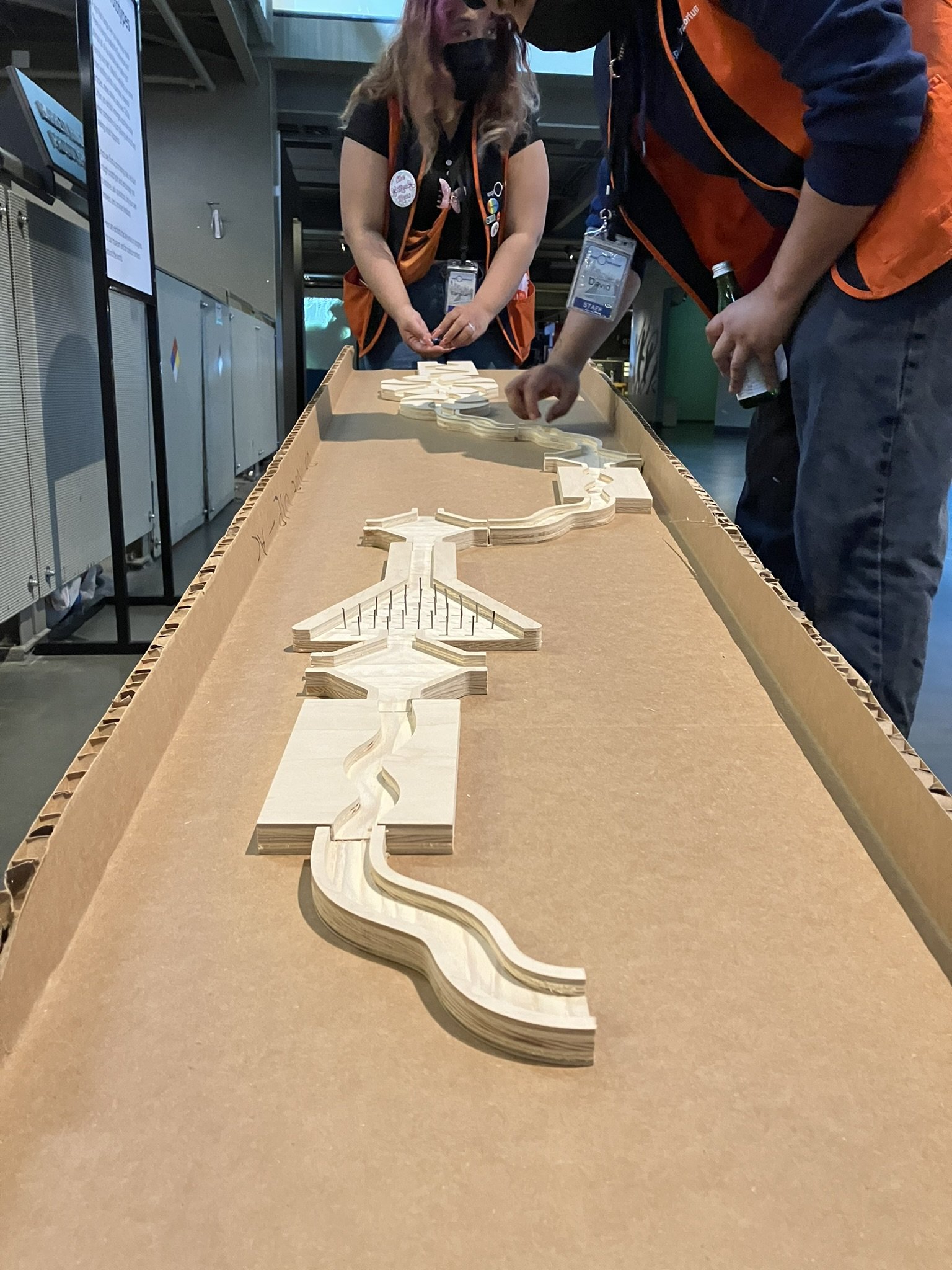Roller Sidetracks and Marble-Run Inspirations
The prototyping process for developing new tinkering activities works best when it’s open-ended and based on authentic experimentation with tools and materials. This means that there are naturally many good ideas, detours and directions that we collect along the way. As part of the prototyping process for the ramps and rollers ‘ufte’ project, Sam Haynor from the Exploratorium exhibit shop got inspired to try a different pathway for a museum activity.
This alternate way to engage learners in experimenting with ramps and rollers involves a set of reconfigurable marble tracks that people could arrange like puzzle pieces on a gently sloping ramp.
I really like this low-threshold way to engage with a marble-machines like experience because it provides a really intuitive entry point. Even though the options are more limited, there are possibilities for collaboration and innovation as people design their own tracks. And there is a sense of what Paul Tatter called “exhibit archeology'' in the experience where the set up always looks different based on visitors’ process and new participants can understand what to do by observing those remaining artifacts of tinkering. I’m excited to follow this project as visitors play in the environment during the Art of Tinkering summer show.
These experiments also relate to a couple of really cool ‘tinkering in the wild’ installations that I’ve seen during summer travels around Germany and Switzerland. The first interesting example that I saw was in the Alps in a little village called Wengen where there were fifteen or twenty intricate marble tracks scattered across town. People could buy little wooden balls at the visitor center and then go around finding and testing each of the different tracks. I really like how they make use of everyday things like tools or sporting goods, but also showcase some of the local elements like cowbells and ski equipment. Definitely an interesting way to infuse the area with a bit of playfulness.
And I saw one other cool inspiration in a park near the river in a town called Schiltach in the Black Forest. For this more rustic set-up there were seven or eight routed marble runs/races with different pathways arranged in a public space.
There was a little birdhouse style structure hanging from a nearby tree where you could slowly take out marbles one by one through a little semi-circle of pegs. This seems like a really nice way to have a low-maintenance system that allows people to play with the structures but not take all the marbles at once. Something like this would be interesting to try in a more open ended museum exhibit that operates without constant facilitation.
When thinking about a tinkering topic like ramps/rollers or marble runs the possibilities and variations are endless. I’m curious to see more designs out in the world that involve people in exploring and experimenting with ball-run contraptions.
The LEGO Playful Learning Museum Network initiative is made possible through generous support from the LEGO Group.











